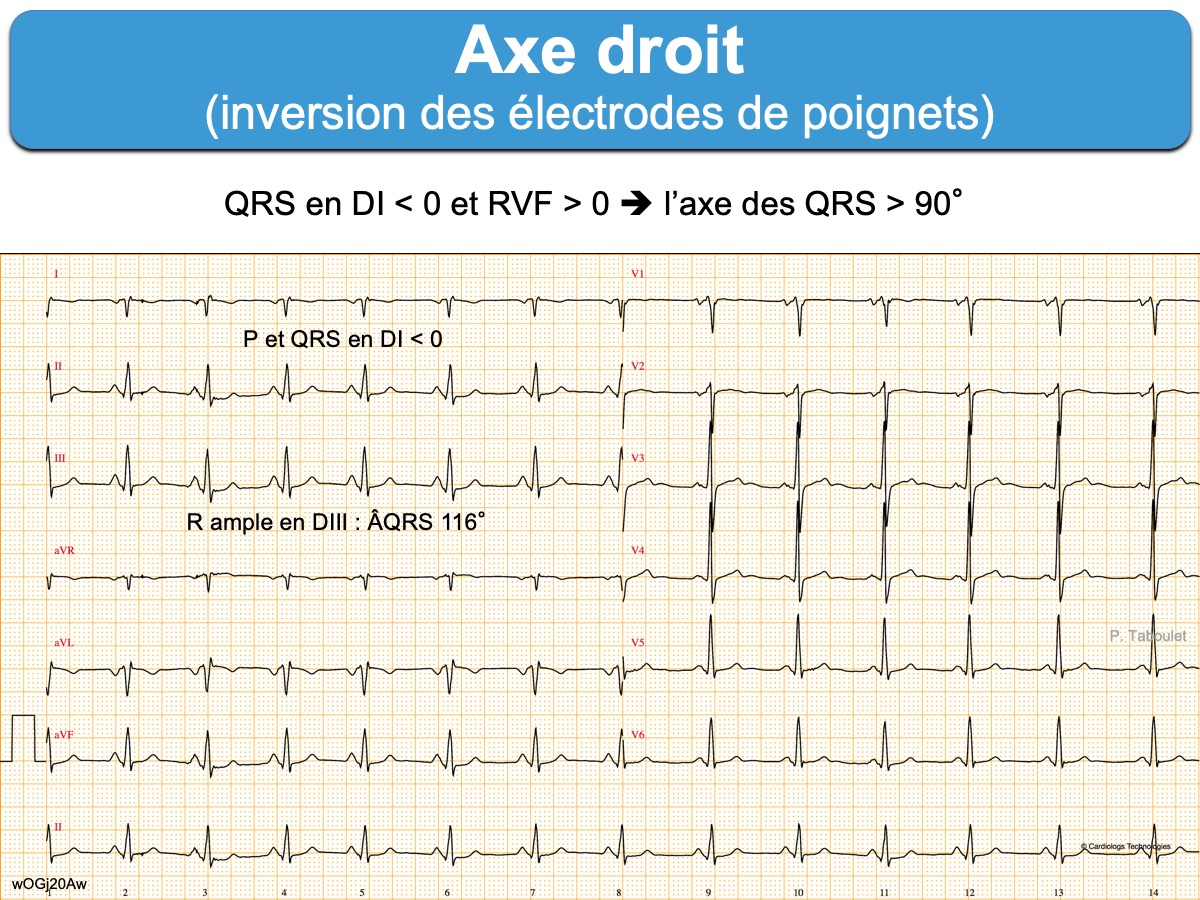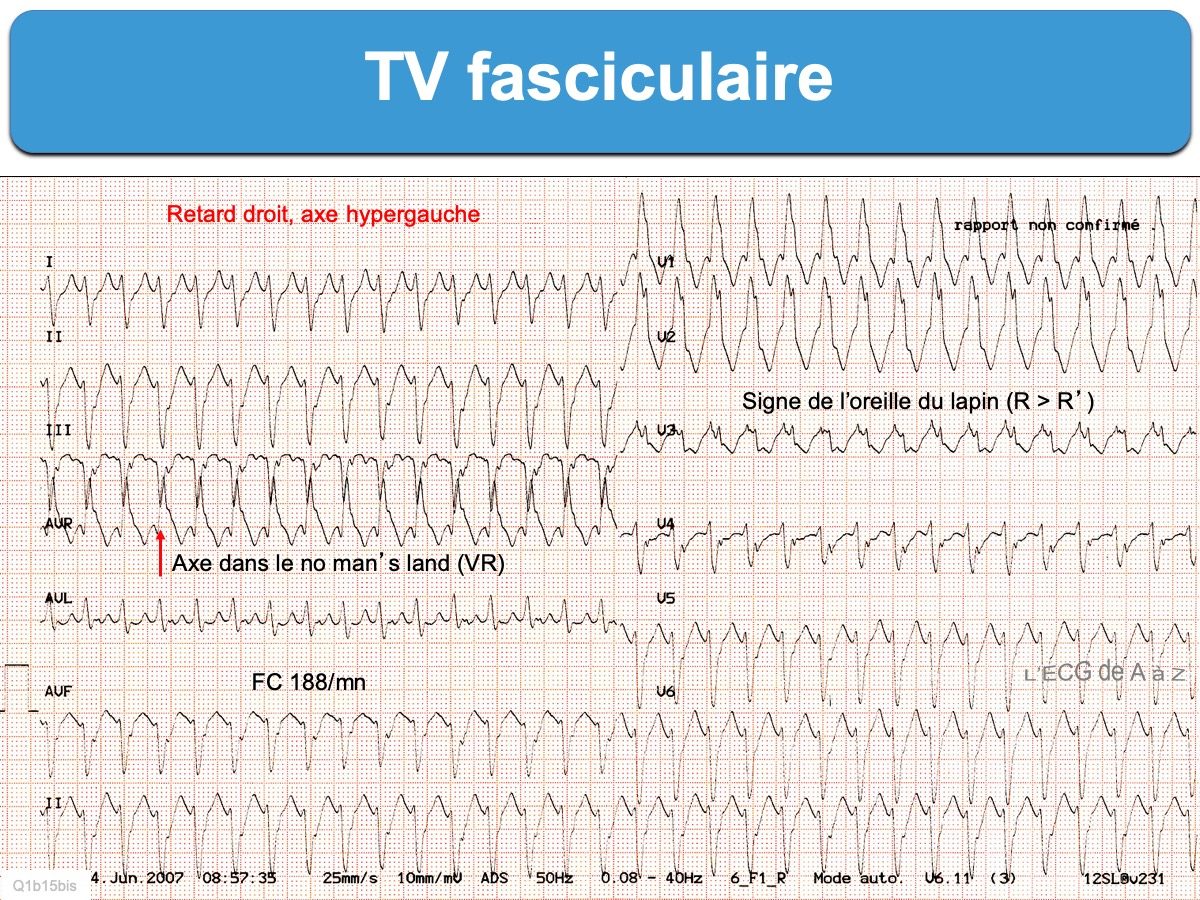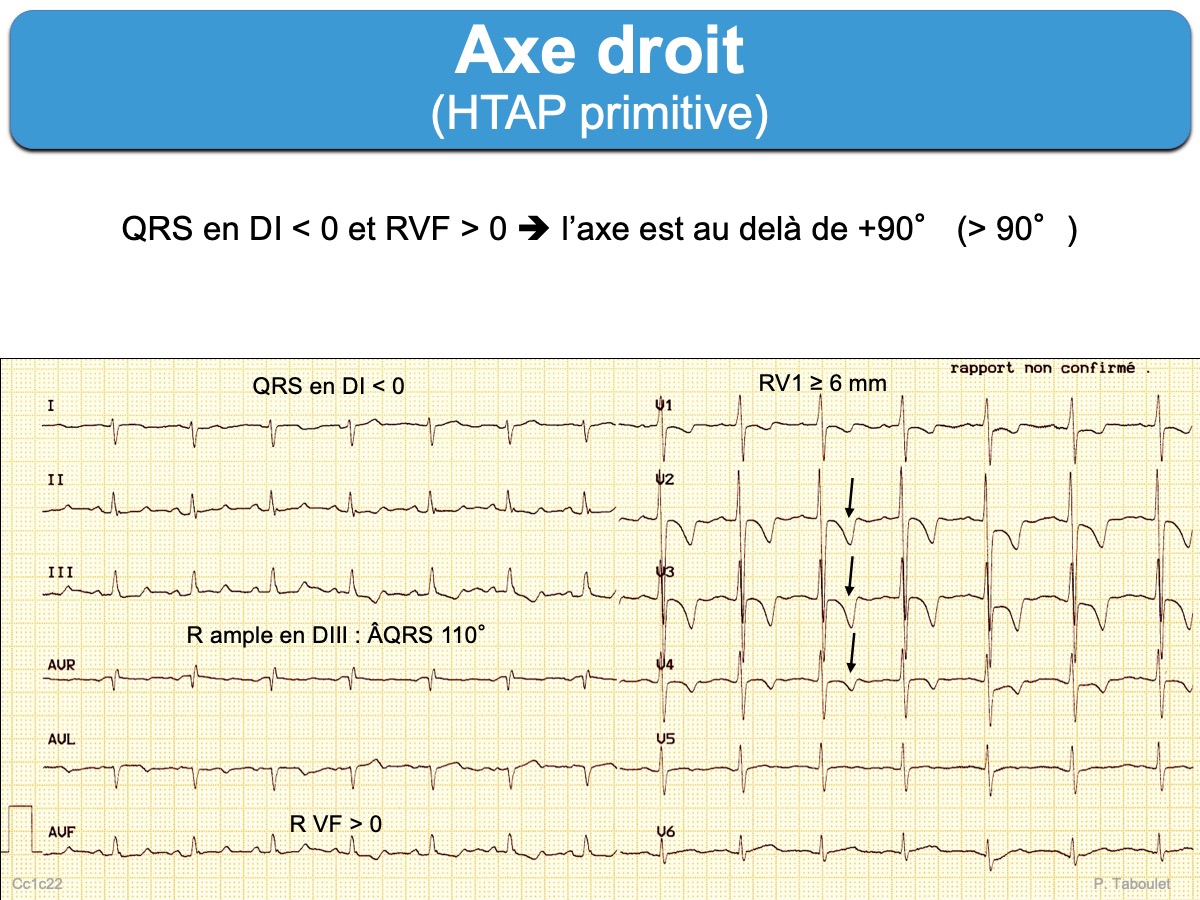L’axe électrique du cœur est dirigé physiologiquement vers la gauche du coeur dans le plan frontal (entre -30 et 90°) [1].
Axe frontal droit
- Axe du cœur entre 90 et 120° (QRS positifs en DII-DIII avec R DIII > R DII) [1].
- Un axe droit est physiologique chez le nourrisson et l’enfant jeune (cf. ECG pédiatrique) et chez un sujet longiligne (cf. Cœur vertical) .
Pathologies :
- Il faut évoquer en premier une inversion d’électrodes frontales si l’onde P est négative en DI (inversion de l’électrode du poignet droit avec une autre électrode).

- Sinon, un axe droit doit faire rechercher une hypertrophie ventriculaire droite ou maladie pulmonaire (Cf. Emphysème, embolie pulmonaire, HTAP), une séquelle d’infarctus dans le territoire latéral et de façon plus exceptionnelle un bloc fasciculaire postérieur gauche au-delà de 100°.
Axe frontal hyperdroit
- Axe du cœur entre 120 et 180° (QRS positifs en DIII avec R DIII > R VF et QRS positifs en VR à partir de 150°) [1].
Pathologies :
- Il faut évoquer en premier une inversion d’électrodes frontales si l’onde P est négative en DI (inversion de l’électrode du poignet droit avec jambe gauche).
- Un axe hyperdroit ou au-delà (entre 180° et 270°) évoque une cardiopathie congénitale (Cf. Trilogie de Fallot), une hyperkaliémie ou ECG toxique (cf. Dérivation VR) et de façon plus exceptionnelle un bloc intraventriculaire non spécifique (souvent associé à une cardiopathie).
- Dans le contexte d’une tachycardie à QRS larges, un axe extrême dans le “no man’s land” (quadrant supéro-gauche) est en faveur d’une tachycardie ventriculaire (Cf. Dérivation VR).

[1] Surawicz B, Childers R, Deal BJ, et al. AHA/ACCF/HRS recommendations for the standardization and interpretation of the electrocardiogram: part III: intraventricular conduction disturbances: a scientific statement from the American Heart Association Electrocardiography and Arrhythmias Committee, Council on Clinical Cardiology; the American College of Cardiology Foundation; and the Heart Rhythm Society: endorsed by the International Society for Computerized Electrocardiology. Circulation. 2009;119(10):e235–e240. In adults, the normal QRS axis is considered to be within -30°and 90°. Left-axis deviation is -30°and beyond… Moderate right-axis deviation in adults is from 90° to 120°, and marked right-axis deviation, which is often associated with left posterior fascicular block, is between 120°and 180°. In the absence of a dominant QRS deflection, as in an equiphasic QRS complex, the axis is said to be indeterminate.

